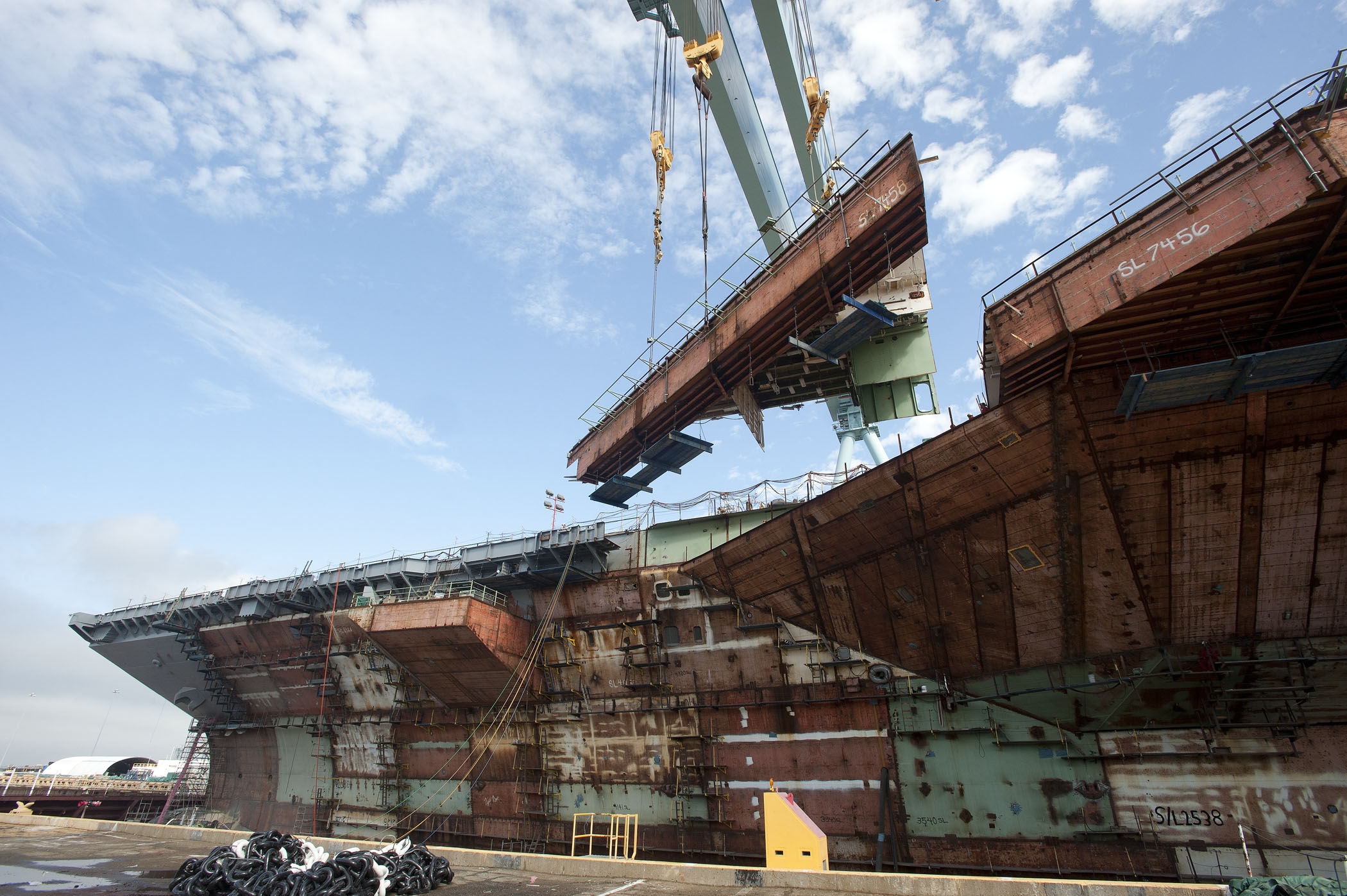
NATIONAL HARBOR, Md. – Chief of Naval Operations Adm. Jonathan Greenert said the Navy is making good progress learning lessons from first-in-class Gerald R. Ford (CVN-78) aircraft carrier and lowering costs for the follow-on John F. Kennedy (CVN-79), but he said more innovative ideas might be needed to introduce competition and continue to cut out cost.
Asked during the service chiefs panel Monday at the Navy League’s Sea-Air-Space 2015 Exposition whether he was confident the aircraft carrier program could meet its congressionally mandated cost caps by identifying and implementing lessons learned, Greenert responded: “I am not personally so confident that I can declare here just based on lessons learned. But on the other hand, what I am confident of, because we’re seeing it, that we are learning lessons.”
“We are learning that you need detailed design before you should start construction because designing and constructing at the same time on such a huge project is inefficient at best. That you have to purchase, you have to have an efficient and effective way to purchase materials and define that as quickly as possible so that the buyer – which there are so many subvendors involved here – can get on with what they’re doing.”
Greenert said he meets regularly with Navy acquisition chief Sean Stackley to discuss ways to not only meet the cost caps for Kennedy but also how to bring further innovation and cost-savings into the program.
“There are just some elements of the carrier that are sole source,” he said.
“But on the other hand, there are some things, items in the carrier, that we might be able to build outside the yard, that when the carrier is complete enough it can move from the yard – from that singular industrial base – to another locale and we can compete things like berthing, things like the repair facility within the airwing called the AIMD, aviation intermediate maintenance depot, and other items. So where we can find the competition, we have to grind in there and continue to rethink this and allow it to compete.”
For the shipyard’s part, engineers are looking hard at how to build the ship both better and differently to save time and money on Kennedy compared to her sister ship.
Newport News Shipbuilding president Matt Mulherin said Tuesday at a Huntington Ingalls Industries media event at the expo that the company is looking at a range of ways to cut out costs in Kennedyand the third carrier in the class Enterprise (CVN-80).
“You talk about how do you do it better, but I think there’s a how do you do it different as well,” he said.
“Better is lessons learned, go change the drawing, change the plan, those kinds of things. How do you do it different is, how do you make larger superlifts, how do you go to more modular construction, some of those kinds of things. So those are the things we’re working on today with Kennedy, things that don’t make its way into Kennedy will certainly be in consideration as we look at CVN-80 Enterprise, CVN-81 and as we continue on.”
Kennedy will have its keel-laying ceremony later this year, will launch in 2020 and will deliver in 2022. Newport News Shipbuilding expects the first contract for Enterprise in Fiscal Year 2017, when it will begin buying long lead time materials.
Ford is currently about 89 percent complete, Mulherin said, and is progressing toward a 2016 delivery. Almost half the ship’s compartments – more than 1,200 –are complete, and the sailors and officers in the Ford crew will move aboard the ship in August.
Last month, officials with Naval Sea Systems Command said the largest risk in delivery of Ford was the development of the General Atomics’ Advanced Arresting Gear for the carrier.
“We are about two years behind where we should be up at Lakehurst in terms of having the systems installed and testing it with real aircraft,” Program Executive Officer for Aircraft Carriers Rear Adm. Tom Moore said.
“Right now my major concern on Ford is AAG. I have to get equipment installed. It’s now all arrived at the shipyard. The shipyard is installing the equipment now and concurrently with that I have to get Lakehurst to start testing the upgraded system.”





